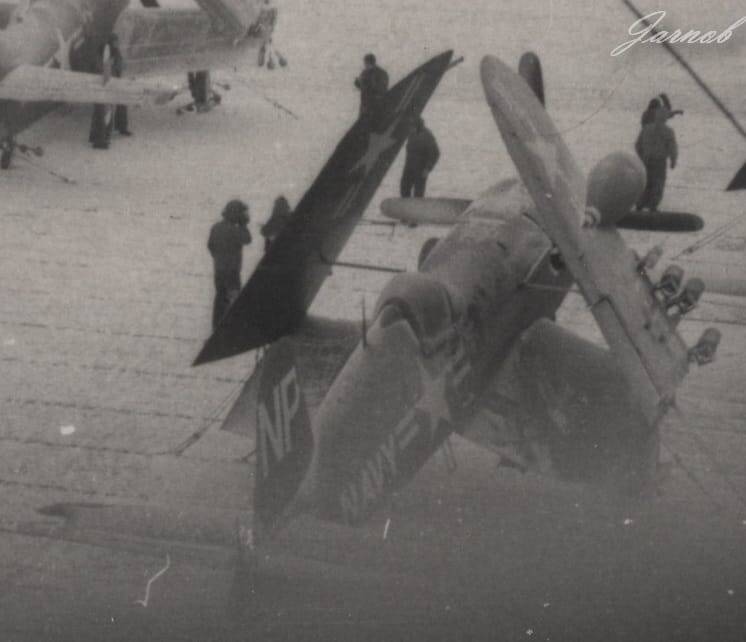Korean War Aircraft Carriers - Essex-class aircraft carriers
I was lucky to obtain several (independent) photograph sets of Korean war aircraft carriers though some years. These are sets made by a crewmember of the USS Princeton, USS Antietam and USS Oriskany. All three are ships of the Essex-class aircraft carriers – this class would shape the future role of modern day supercarriers.
The Essex class consisted of 24 carriers, no other carrier class would bring forth such a large number of ships. The first production models would successfully operate during the second World War in the Pacific theatre – none were lost while even some were heavily damaged by bombs, kamikazes and storms. 11 Essex class ships would participate in the Korean war fulfilling a major role – without these carriers (and their crews) South Korea would definitely be lost. Another 13 would later operate before, during and after the Vietnam war. Although already outdated they still had key positions.
Later some would be the recovery ships of many US space vehicles (Mercury, Gemini and Apollo).
And it should be noted that it was not just these Essex carrier fulfilling their important parts in history – these would be useless without their ship- and aircrews!
Shaping the aircraft carriers future
The Essex-class carriers served from 1943 until 1991 during which they made the most important structural improvements which lead to the super carriers of today. For example:
*the first type was completely World War 2 design: one straight flightdeck, large twin gun turrets in front and rear of the superstructure (‘island’), no launching system (propeller take off into the wind only), only propeller aircraft available: bombers, torpedo-bombers, fighters and fighter-bombers.
During the years these developments were made:
- removal of large turrets in the deck; smaller turrets and AA-guns emplaced all around the deck.
- upgrades of superstructure – all the way to radar capabilities.
- introduction of one angled flight deck; making flight operations safer: due to aircraft possible to overshoot when missed cable during landing instead of crashing into aircraft on the front deck. Besides safer is made operations more versatile: aircraft were possible to land while a max of two aircraft could be launched from the front deck.
- introduction of jet aircraft – together with raisable jet blast barriers for take-off.
- expansion of carrier air wing group; with photo-reconnaissance, anti-submarine, early warning, air transport, nightfighter and nighbomber aircraft together with rescue helicopters.
Essex-class modifications thoughout the years
Essex-class Korean war aircraft
F9F-2 Panther
The F9F was the first Grumman developed jet fighter, armed with 4 20mm nose canons it could also take a punch in combat. Used as fighter bomber it was the main Navy/ USMC aircraft during the Korean war flying 78.000 sorties. During the war future astronauts Neil Armstrong and John Glenn also flew the Panther in combat. The F9F was the first jet powered aircraft of the Blue Angels.
F4U-4 Corsair
The F4U-4 Corsair was a World War 2 combat proven fighter bomber which reigned the Pacific theatre. After World War 2 it still was the all-round fighter bomber and as such was successfully used during the Korean war. A total of 12.500+ aircraft were manufactured between 1942 and 1953 – which gives an idea how widely this aircraft was deployed.
AD-4 Skyraider
The AD-1 Skyraider was in service from 1946 to 1980. Its overpowered engine and sturdy airframe made it a piston engine equivalent of the modern A10 Warthog. For this purpose, CAS, it was mainly used, being able to carry a large quantity of different ordnance underneath its large wings. In fact it was THE A10 of the Korean and Vietnam war.
F4U-5N Corsair night fighter
The F4U-5N was equipped with a large radar radome on the right wing used for tracking aerial targets after nightfall. They were also with 4 20mm canons (to pack a greater punch) instead of 6 all-purpose .50 inch guns. These aircraft were also used as fighterbombers.

F-9F-5P (RF-9D) Panther photo reconnaissance
The F9F-5P (RF-9D) was an unarmed photo reconnaissance Panther with longer nose for camera’s.
AD-4NL night attack aircraft
The AD-4NL was a night attack bomber (normally 1-seat) which was also modified for duty in winter conditions (“L”).
It had two different distinctive pods beneath its wings. All white markings on the aircraft were toned down by spraying dark paint over them.

AD-4W aircraft airborne early warning
Three seat early warning and radar jamming aircraft. Its cockpit was elongated to house two more crewmembers to operate the equipment. Besides communications one operator was used to handle the large distinctive radar bulb underneath the aicraft centerline. Two antennaes were also visible on the rear horizontal stabilator structure.

HO-3S-1 rescue helicopter








